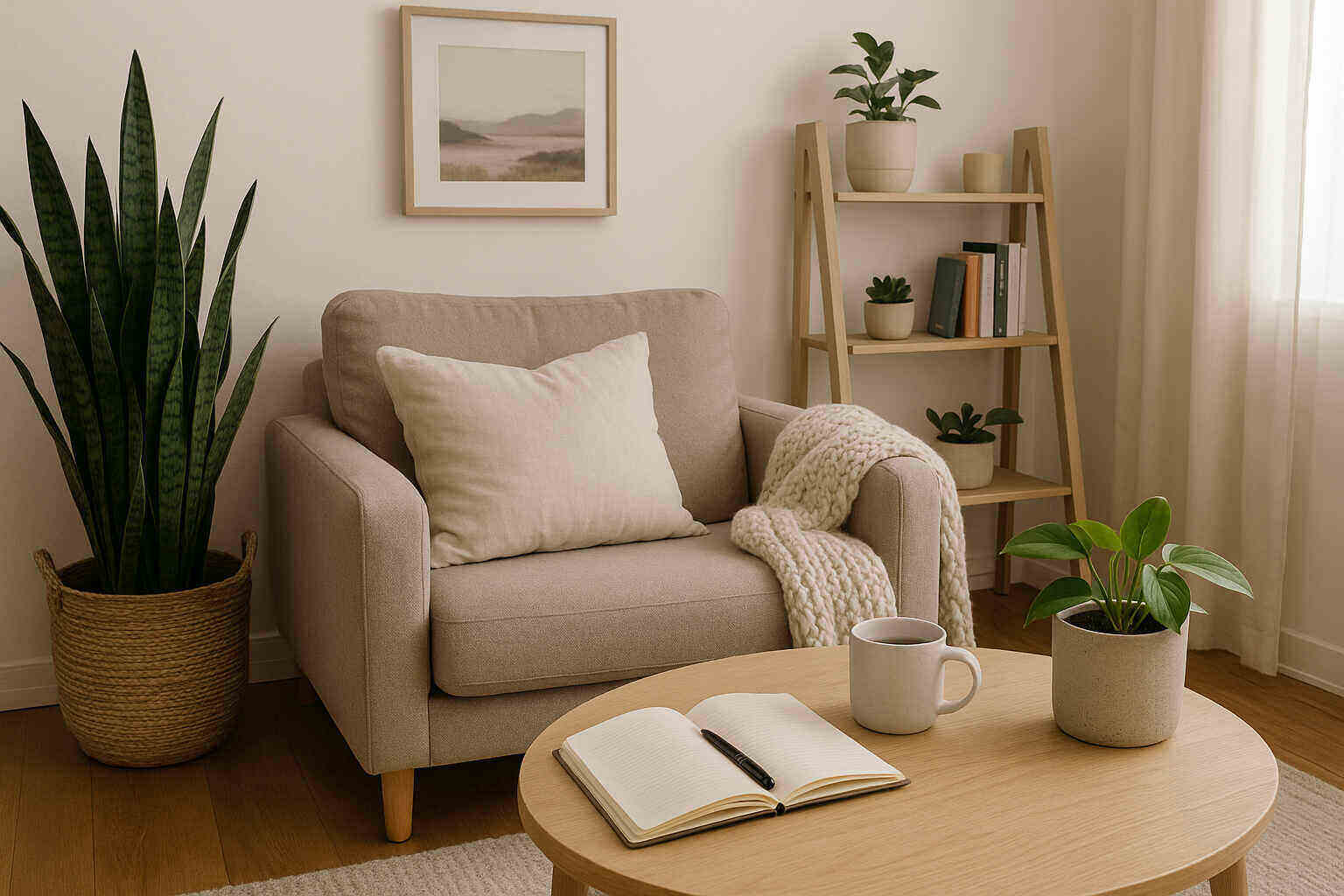Modern life often feels relentless, with stress creeping into every corner of our existence. Amid this whirlwind, carving out a peaceful mental health corner at home can offer a safe space to decompress, reset, and nurture emotional well-being. Whether you live in a sprawling house or a compact apartment, creating a dedicated mental health sanctuary is entirely achievable with thoughtful touches and intentional design. Here’s how you can transform even the smallest nook into a retreat for your mind and soul.
1. Choose a Quiet Spot
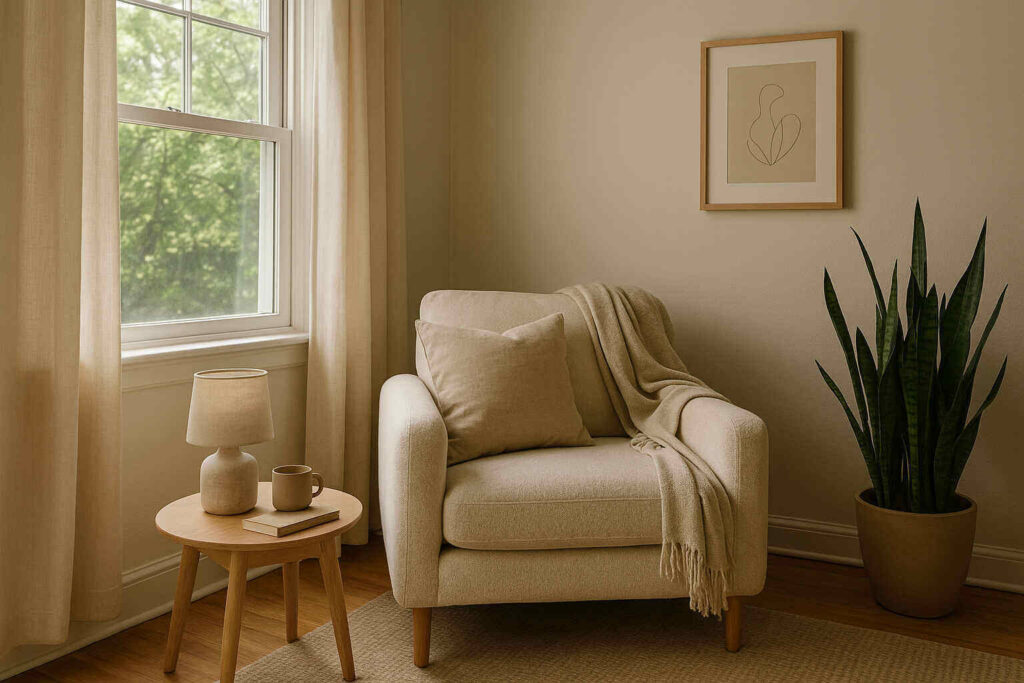
Begin by selecting a space that naturally feels calm. A corner away from heavy foot traffic, noisy appliances, or digital screens is ideal. Even a small nook by the window can become a sanctuary. A study published in Environmental Health Perspectives indicates that noise pollution can elevate stress hormones, making quietness a powerful ally in mental health efforts.
If silence isn’t entirely possible, try noise-cancelling curtains or use a white noise machine to mask disturbances. Many people find that even shifting furniture slightly to “enclose” a nook can psychologically signal a shift into relaxation mode. Remember, your mental health corner doesn’t have to be large—it just needs to feel separate from the hustle around it.
2. Embrace Natural Light
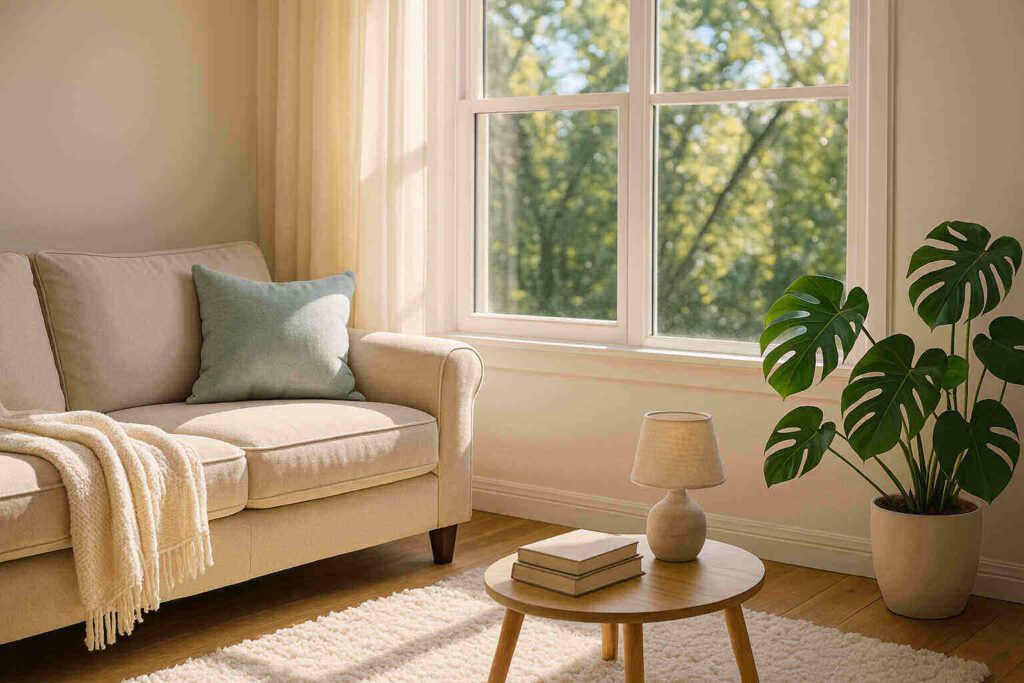
Let sunlight become your daily companion. Natural light isn’t just pleasant—it’s vital for your mental health. Studies show that exposure to daylight raises serotonin levels, helping you feel more positive and focused. It also helps regulate your body’s internal clock, leading to improved sleep and an overall boost in mood. Researchers at Harvard confirm that bright light therapy can ease symptoms of seasonal depression and everyday low spirits.
If your cozy mental health corner doesn’t catch much sun, don’t worry. Modern technology offers excellent alternatives. Full-spectrum bulbs imitate daylight, casting a gentle, energizing glow without the harshness of standard LEDs or fluorescents. Choose lamps labeled “daylight” or “natural light” for the best effect.
Whenever possible, arrange your relaxation area near a window. The simple act of gazing outside—watching trees sway or clouds drift by—can soothe anxiety and restore a sense of calm. Harness light as a powerful means to shape an environment that supports your mind and spirit.
3. Incorporate Comfortable Seating

Comfortable seating is the heart of any mental health corner. Whether it’s a cozy armchair, a cushioned floor mat, or a supportive meditation cushion, choose something that invites you to stay awhile. A stiff or awkward seat can discourage you from using the space consistently.
A comparison of various seating options in The Ergonomics Journal revealed that supportive chairs reduce physical tension, helping mental relaxation as well. Test several seats if you can. Some people prefer the cradling softness of a beanbag, while others find structured chairs with good lumbar support ideal for reading or journaling.
Soft throws or weighted blankets can further enhance comfort, adding a gentle, grounding pressure that many find soothing.
4. Choose Calming Colors
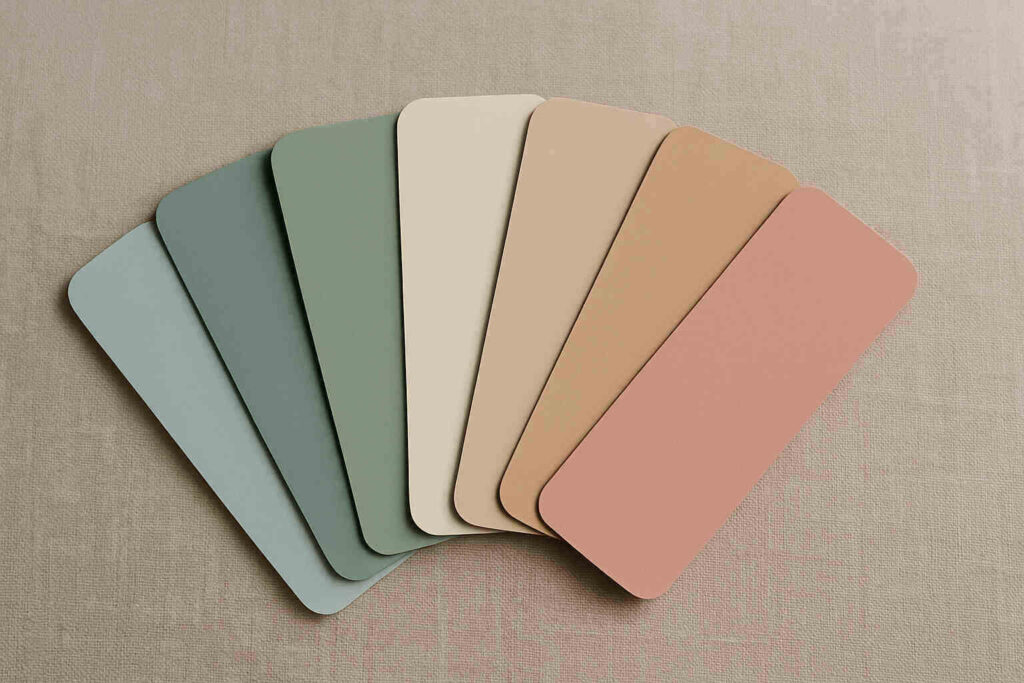
The colors you surround yourself with can genuinely shape how you feel each day. Studies, like those in Frontiers in Psychology, show that soft hues—think pale greens, cool blues, gentle lavenders, and soothing neutrals—help reduce stress and promote calmness. In contrast, bold shades like bright reds or fiery oranges can energize but sometimes overstimulate, making it harder to unwind.
To create a serene mental health corner at home, try painting a feature wall in a calming color, or add accents through cushions, throws, rugs, or art prints. If you’re renting and can’t paint, peel-and-stick wallpaper is a renter-friendly option that’s easy to remove later. Even a single piece—a soft blue vase, a sage green lamp, or lavender-toned artwork—can set a peaceful mood without overwhelming your space.
Remember, color doesn’t have to dominate every inch of your room. Strategic pops of calming shades can work wonders for your well-being, helping transform your space into a quiet retreat where your mind can truly relax.
5. Add Plants for Natural Serenity

Indoor plants offer proven mental health benefits, including reducing stress and improving mood. Studies have found that interacting with plants—even just looking at them—can lower blood pressure and feelings of anxiety.
Choose low-maintenance greenery like snake plants, pothos, or peace lilies, which thrive in various lighting conditions. Alternatively, small succulents are perfect for compact spaces. A mix of sizes and textures can create a layered, soothing aesthetic.
Beyond their visual appeal, plants help purify indoor air, contributing to a healthier environment overall. If you’re concerned about upkeep, high-quality artificial plants can still add the illusion of nature without the maintenance demands.
6. Incorporate Soft Textures
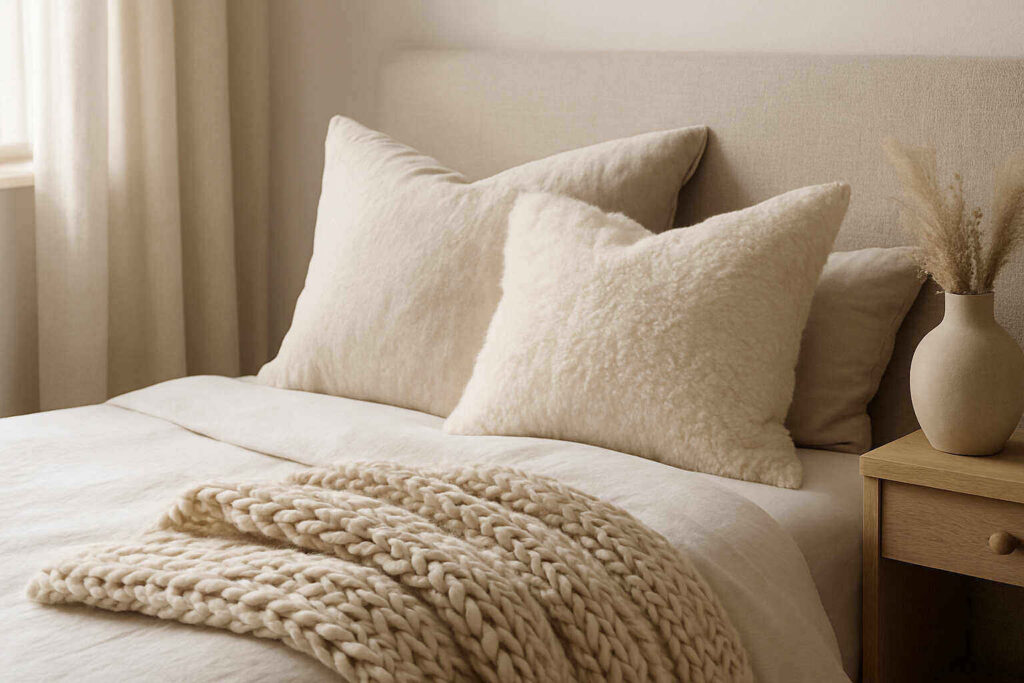
Soft textures can completely transform how a room feels, offering not just visual appeal but emotional comfort. Think cozy rugs underfoot, plush pillows to sink into, and chunky knit throws that invite you to wrap up and relax. These tactile elements do more than look good—they can help your brain release feel-good chemicals, easing stress and anxiety.
Research in sensory processing shows that soft textures are particularly beneficial for calming overstimulation and helping with emotional regulation. This is especially useful for anyone prone to anxiety or those needing a soothing environment after a long day.
To make your space truly inviting, layer different textures for added depth and sensory interest. Pair a fluffy rug with breezy linen curtains and add a velvet cushion for contrast. This mix doesn’t just elevate your décor—it also provides a comforting range of surfaces you can touch and engage with when you’re feeling overwhelmed.
By thoughtfully incorporating soft textures, you create a sanctuary that nurtures relaxation and mental well-being, turning your home into a true retreat from the chaos of everyday life.
7. Personalize with Meaningful Items
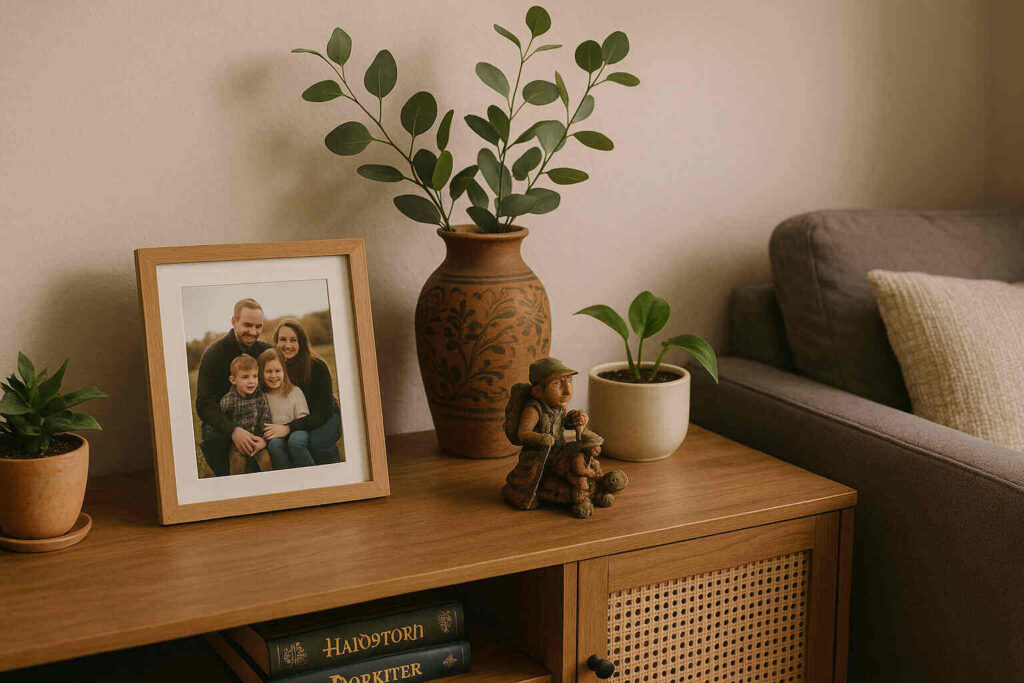
Creating a mental health corner is more than decorating—it’s about crafting a refuge that reflects who you are. Choose a few special items that bring comfort and positive memories into your space. A photograph of a loved one, a ticket stub from a memorable concert, or a quote that lifts your spirits can instantly connect you to moments of joy or strength.
Such objects aren’t merely decorative; they stimulate your brain’s reward pathways, fostering calm and emotional resilience. Think quality over quantity. Avoid crowding your space with too many things, as clutter can feel overwhelming and distract from the purpose of relaxation.
Select just a few items that spark genuine happiness. Perhaps a single seashell collected from a peaceful beach, a beloved book whose words soothe you, or an artwork that fills you with inspiration. These personal artifacts act as emotional anchors, grounding you during stressful times and reminding you of the good that exists beyond daily worries.
Your mental health corner should be a sanctuary—a place that feels safe, soothing, and deeply personal. Let it tell your story, one meaningful piece at a time.
8. Include Calming Scents

Aromatherapy isn’t just about pleasant fragrances—it can truly assist in easing stress and fostering relaxation. Scents such as lavender, chamomile, and bergamot have been scientifically shown to ease anxiety and create a soothing atmosphere. For example, research published in Evidence-Based Complementary and Alternative Medicine revealed that inhaling lavender essential oil significantly lowered anxiety levels among participants.
You can easily introduce these calming aromas into your environment. Try using essential oil diffusers for a gentle, continuous scent, or light a natural soy candle infused with essential oils. Natural potpourri is another beautiful way to keep your space smelling inviting without harsh chemicals.
However, be mindful if you’re sensitive to strong fragrances, as some people experience headaches or allergic reactions. Opt for high-quality, pure essential oils rather than synthetic fragrances, which often contain artificial chemicals that may irritate the senses.
By incorporating calming scents into your home or workspace, you create a small sanctuary that supports better mental health, reduces daily stress, and helps you unwind naturally. It’s a simple, affordable step towards nurturing your overall well-being.
9. Integrate Sound Therapy
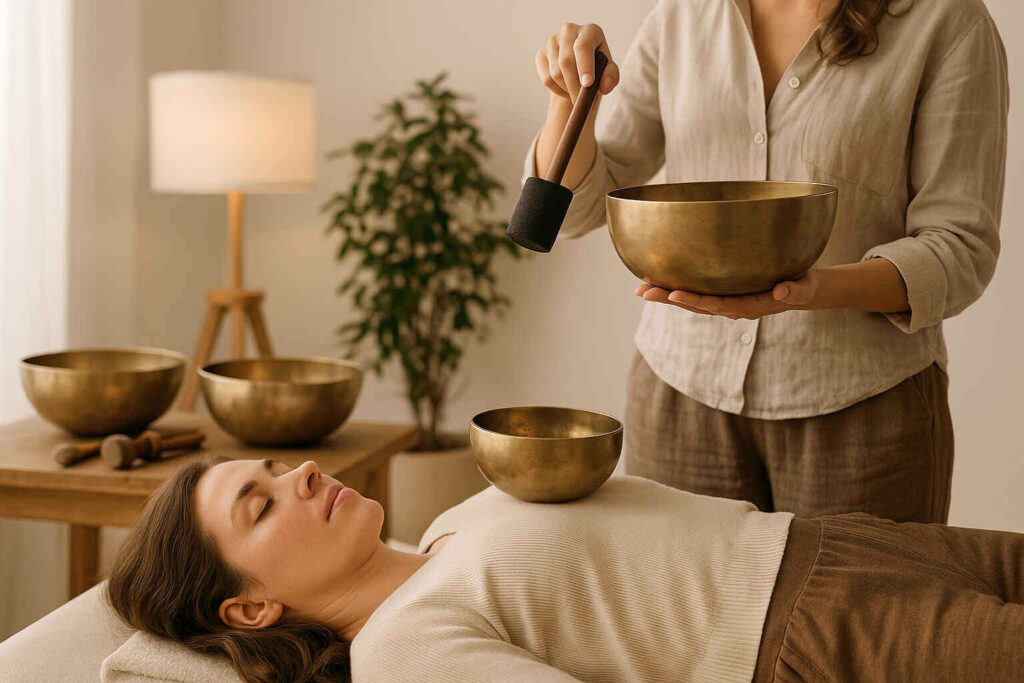
Sound therapy is a simple yet powerful way to create a calm and focused environment. Gentle sounds—like soft music, ocean waves, rainfall, or the soothing tones of singing bowls—can help mask distracting noises and ease mental tension. Studies from the National Institutes of Health show that sound therapy can help reduce anxiety and promote better sleep quality, making it an effective tool for both relaxation and stress management.
You don’t need elaborate equipment to start. A small Bluetooth speaker is perfect for streaming playlists tailored to your mood. Many people enjoy apps offering ambient sounds or guided soundscapes. Alternatively, white noise machines can block unwanted noise if you live in a noisy neighborhood or work in a busy office.
The key is to experiment. Notice how different sounds affect your mood, focus, and energy levels. For some, flowing water feels calming; for others, gentle instrumental music helps them concentrate. Including sound therapy in your everyday schedule can bring moments of calm amid a busy day, allowing both your mind and body to unwind and rejuvenate.
10. Create a Reading Book

Books are a gentle refuge for the mind. Creating a small reading nook in your mental health corner offers a peaceful escape from stress and daily noise. Research shows reading can reduce stress levels by up to 68%, helping to slow your heart rate and ease muscle tension.
Fill your space with a variety of reading materials. Choose soothing fiction, inspiring poetry, practical self-help guides, or spiritual texts that uplift your spirit. For some, simply paging through a photography book, art collection, or a nature magazine can bring instant calm.
Keep your reading nook dynamic by rotating books every few weeks. This refreshes your mind and keeps curiosity alive. Add soft lighting, a cozy chair, and perhaps a warm throw blanket to make your nook inviting.
Remember, it’s not about how much you read but how it makes you feel. Even ten quiet minutes with a favorite book can help you reset emotionally. A thoughtfully stocked reading nook becomes a simple, powerful tool for supporting mental well-being in everyday life.
11. Use Inspirational Art

Art isn’t just decoration—it can profoundly influence your mood and well-being. Studies published in Brain and Cognition reveal that viewing art activates the brain’s reward centers, sparking feelings of pleasure, calm, and inspiration. Incorporating art into your home or workspace is a practical way to foster a soothing environment that supports mental health.
Choose pieces that evoke tranquility and positivity. Landscapes with gentle skies and serene waters, abstract works in soft, harmonious tones, or art featuring meaningful symbols like lotus flowers or peaceful figures can create a sense of balance and peace. Even a small print can shift the energy of a room.
You don’t have to spend a fortune to enjoy beautiful art. Many talented artists sell affordable digital downloads online, allowing you to print and frame pieces that speak to your personal taste. This flexibility lets you refresh your space whenever you crave new inspiration. Thoughtful art choices can transform your surroundings into a haven of calm, helping you feel centered and uplifted every day.
12. Make Space for Meditation or Breathing Exercises
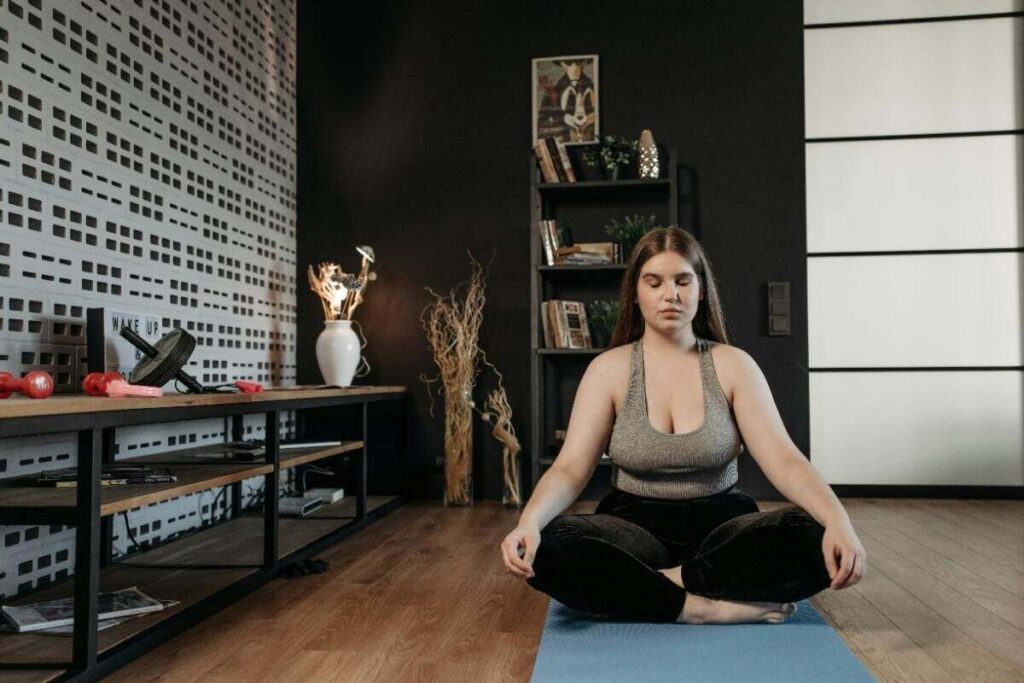
Designing a mental health corner at home can work wonders for your stress levels and emotional balance. Dedicating even five minutes a day to meditation or breathing exercises has been shown in research—including a study in JAMA Internal Medicine—to lower anxiety and reduce cortisol, the hormone linked to stress.
Start simple: keep a comfortable cushion or yoga mat ready in your chosen spot. If you’re new to meditation, apps like Calm or Insight Timer offer guided sessions that make it easy to begin without feeling overwhelmed.
Adding a journal to your mental health corner can deepen your practice. Write down how you feel after meditating—it’s a powerful way to spot patterns in your mood and track progress over time.
Remember, your space doesn’t have to be large. A quiet nook by a window, a corner of your bedroom, or even a chair in a peaceful spot can become your sanctuary. The key is consistency. Just a few minutes each day can help clear your mind, improve focus, and bring a sense of calm into your busy life.
13. Keep It Clutter-Free
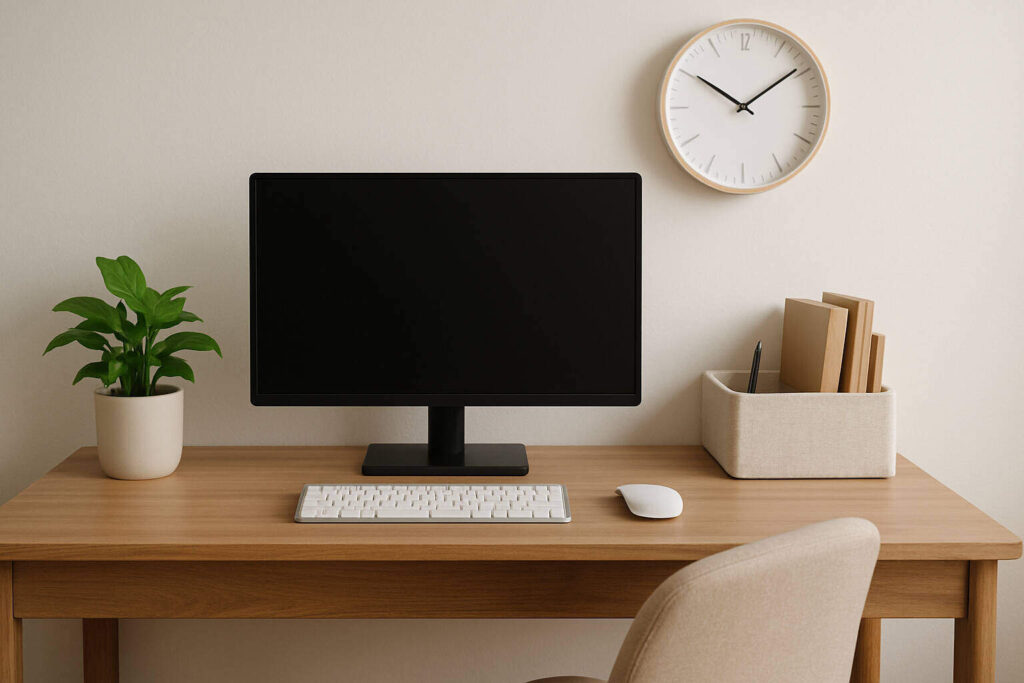
A cluttered environment doesn’t just look messy—it affects how your brain works. Neuroscientists at Princeton found that visual clutter overwhelms your brain’s ability to focus, leading to stress, distraction, and mental fatigue. Simply put, every pile of papers or random objects is competing for your attention, even if you think you’re ignoring it.
To keep your space serene and supportive of clear thinking, adopt small habits. Use baskets, bins, or shelves to store everyday items neatly. Keep only what you truly use or love in your workspace. Remember: less is often more when you’re aiming for mental calm.
Schedule a quick decluttering session weekly. Consider whether every item truly brings you value or happiness. If not, donate, recycle, or toss it. The goal isn’t sterile minimalism but creating a space that feels open, restful, and easy to navigate.
By maintaining a clutter-free zone, you’ll boost productivity, reduce stress, and enjoy a more peaceful atmosphere—benefits that extend well beyond your workspace into daily life.
14. Consider Soft Lighting Options
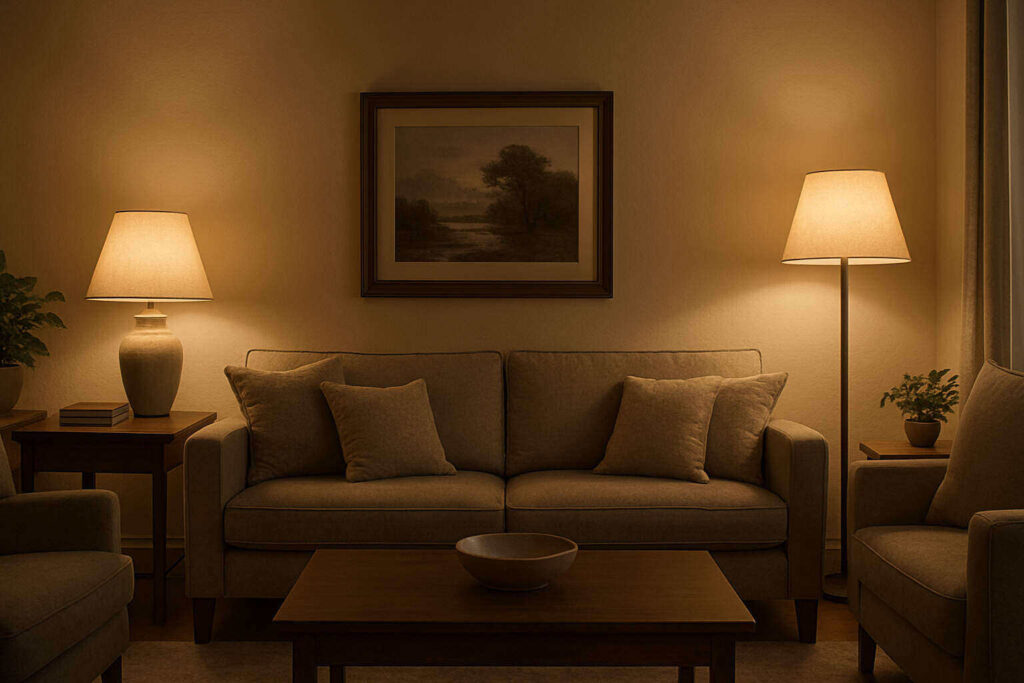
Bright, overhead lights can often feel harsh and clinical, making it harder to relax. Instead, aim for gentle, diffused lighting to create a soothing environment. Table lamps with fabric shades, strings of fairy lights, or natural options like Himalayan salt lamps all offer a cozy glow. Warm-toned bulbs, around 2700K, mimic the gentle light of sunrise and sunset, which research links to feelings of comfort and security.
Dimmable fixtures are especially practical, letting you tailor the brightness to your needs—bright enough for reading or working, yet soft enough for unwinding at night. In a space dedicated to mental well-being, soft lighting can make a real difference. It helps reduce eye strain, fosters a sense of calm, and encourages mindfulness.
By thoughtfully choosing softer light sources, you transform your mental health corner into a welcoming retreat. Whether you’re journaling, meditating, or simply taking a quiet moment for yourself, warm, gentle lighting sets the perfect mood for rest and reflection.
15. Incorporate Mindful Activities
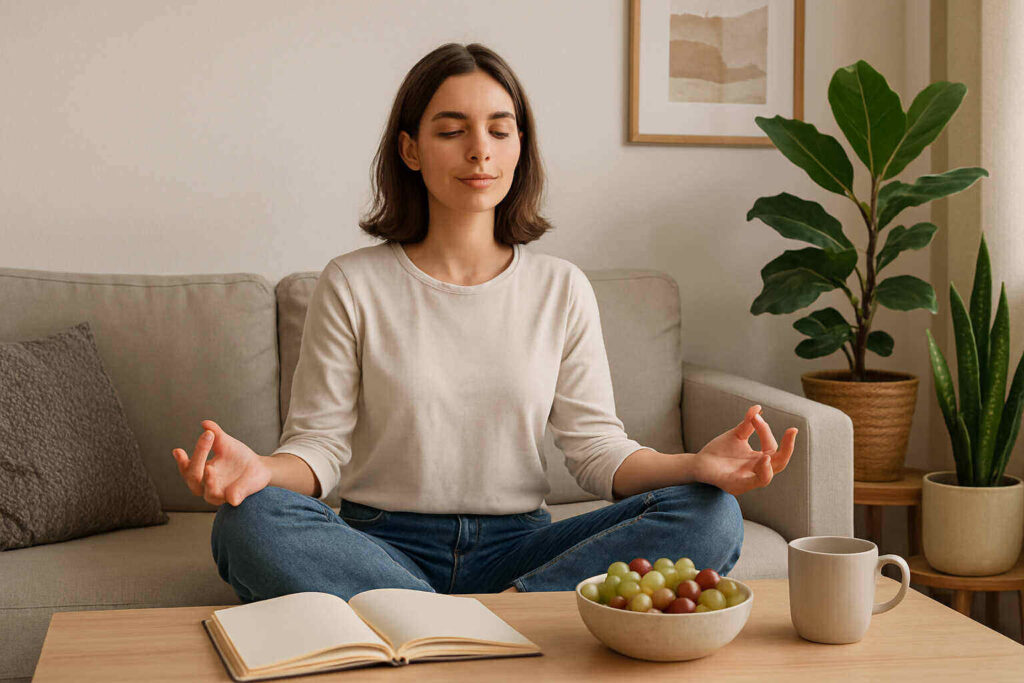
Adding mindful activities to your daily routine is a powerful way to manage stress and nurture mental health. Simple creative outlets—like adult coloring books, knitting, origami, or small puzzles—can calm racing thoughts and bring you into the present moment. Research shows engaging your hands in crafts or gentle tasks helps lower cortisol levels, easing tension and promoting relaxation.
To make mindfulness part of your life, keep a small basket or box stocked with supplies you love. Place it somewhere easily accessible so you’re ready when stress arises. Choose activities that feel soothing and enjoyable rather than tasks that might become frustrating or time-consuming. For instance, select coloring pages with patterns you find relaxing, or try folding simple origami shapes instead of complex models.
Even just ten minutes of creative focus can help clear your mind and boost your mood. Mindful crafting not only helps you step away from screens and daily worries but also fosters a sense of calm and fulfillment. The key is finding activities that truly bring you joy and offer a gentle escape, helping you reset and recharge whenever you need it.
Disclaimer: This article is intended solely for informational purposes and should not be considered medical advice. Always seek the guidance of a qualified healthcare professional regarding any mental health concerns.

